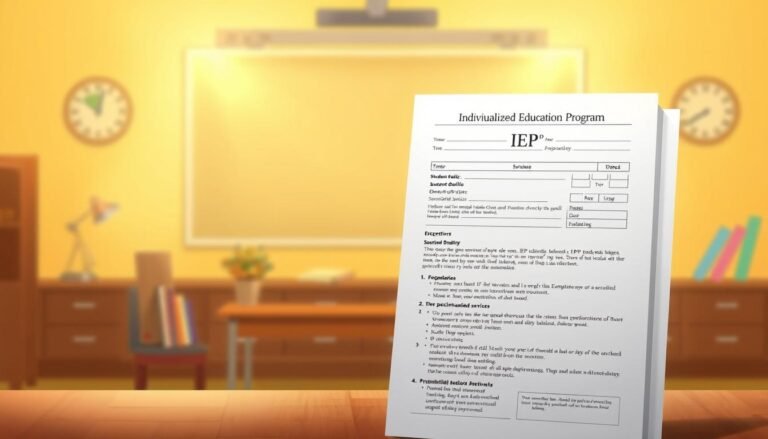
From Struggle to Strength: Inspiring Stories of Overcoming Learning Disabilities and Speech Disorders
Introduction
In a world that often prioritizes perfection, the stories of those who have faced and overcome challenges related to learning disabilities and speech disorders shine as beacons of resilience and strength. This exploration—From Struggle to Strength: Inspiring Stories of Overcoming Learning Disabilities and Speech Disorders—not only highlights individual journeys but also amplifies the importance of understanding, support, and empowerment. Each narrative serves as a reminder that struggle often fuels growth, leading to surprising discoveries about oneself and the world.
Why does this topic matter? With an increased focus on inclusivity and awareness in society, the personal accounts of individuals becoming advocates for themselves and others can inspire change, pave the way for greater acceptance, and encourage support systems. In this article, we will deep-dive into inspiring tales, supported by relevant data, to illustrate how overcoming obstacles related to learning disabilities and speech disorders can lead to remarkable personal development.
Understanding Learning Disabilities and Speech Disorders
What Are Learning Disabilities?
Learning disabilities are neurological conditions that affect an individual’s ability to process information. They can manifest in various ways, such as difficulties with reading (dyslexia), writing (dysgraphia), and mathematics (dyscalculia). According to the National Center for Learning Disabilities, approximately 1 in 5 individuals in the U.S. has some type of learning disability.
What Are Speech Disorders?
Speech disorders impact an individual’s ability to communicate effectively. They may include difficulties in articulation, fluency (e.g., stuttering), or voice quality. The American Speech-Language-Hearing Association reports that about 8-9% of children in the U.S. experience speech disorders.
Overlap Between Learning Disabilities and Speech Disorders
While distinct, learning disabilities and speech disorders often overlap, leading individuals to face compounded challenges in both academic and social environments. A 2021 study indicated that students with learning disabilities were twice as likely to experience speech disorders, further complicating their educational journeys.
Case Study 1: The Journey of Jessica
Background
Jessica, diagnosed with dyslexia at an early age, faced immense challenges in her educational environment. Despite her intelligence, reading and comprehension were daunting obstacles.
The Turning Point
At age 12, Jessica met a supportive teacher who introduced her to multisensory learning techniques, such as using manipulatives and visual aids. This approach was transformative.
Analysis
Jessica’s story highlights how individualized instructional strategies can significantly impact the learning experience. By focusing on her strengths and accommodating her needs, her teacher helped shift her journey from frustration to empowerment.
Lessons Learned
- Importance of Personalized Learning: Each individual has distinct needs; tailored approaches can promote success.
- Advocacy Matters: Jessica learned to advocate for herself, demonstrating the importance of vocalizing one’s needs.
Case Study 2: The Triumph of Max
Background
Max struggled with a speech disorder characterized by stuttering. Growing up, he felt isolated and misunderstood, which affected his confidence in social situations.
The Turning Point
In high school, Max joined a public speaking club. The supportive environment allowed him to practice his speech techniques in an encouraging setting. He also connected with a speech-language pathologist for one-on-one support.
Analysis
Max’s experience underscores the significance of community and professional support in overcoming speech challenges. His journey exemplifies how practice and perseverance can lead to dramatic improvements in self-confidence and communication skills.
Lessons Learned
- Embrace the Journey: Every small step takes an individual closer to their goals.
- Building a Support Network: Surrounding oneself with supportive peers can foster growth and resilience.
Table 1: Common Learning Disabilities and Speech Disorders
| Type | Description | Prevalence (%) |
|---|---|---|
| Dyslexia | Difficulty with reading and comprehension | 5-10% |
| Dysgraphia | Issues with writing and fine motor skills | 5-20% |
| Dyscalculia | Difficulty with mathematical concepts | 3-7% |
| Stuttering | Disruptions in fluency of speech | 1% |
| Speech Sound Disorder | Problems articulating specific sounds | 8-9% |
The Role of Parents and Educators
Supporting Children with Learning Disabilities
Parents and educators play a crucial role in fostering resilience among children. Early interventions, tailored accommodations, and advocating for the child’s needs can significantly influence a child’s academic journey.
Creating an Inclusive Environment
Schools should aim to create inclusive environments that celebrate differences while providing resources for children with learning disabilities and speech disorders. Training teachers on how to recognize these challenges can enable them to provide appropriate support.
Case Study 3: The Story of Sarah
Background
Sarah was diagnosed with attention-deficit hyperactivity disorder (ADHD) and a speech sound disorder. In school, her impulsivity often led to misunderstandings and negative attention.
The Turning Point
After engaging with a supportive school counselor and implementing mindfulness techniques, Sarah learned to manage her impulsivity. Speech therapy helped her articulate her thoughts more clearly.
Analysis
Sarah’s case emphasizes the importance of emotional regulation in managing learning disabilities and speech disorders. Mindfulness and counseling support play a vital role in developing emotional resilience.
Lessons Learned
- Emotional Intelligence is Key: Understanding and managing emotions can greatly influence educational outcomes.
- The Power of Self-Advocacy: Learning to communicate needs is integral for anyone facing challenges.
Strategies for Overcoming Challenges
Goal Setting
Establishing achievable goals allows individuals to build confidence as they accomplish smaller tasks en route to larger objectives. Specific, measurable goals can translate to concrete progress.
Support Networks
Forming communities can foster growth. Online forums, support groups, and mentorship programs can serve as excellent platforms for sharing experiences and offering encouragement.
Continuous Learning
Encouragement of lifelong learning equips individuals with skills that foster adaptability and resilience. Encourage exploration of various learning styles and communication methods.
Conclusion
The journey from struggle to strength is not merely a saying—it is a transformative process that countless individuals have lived. As showcased through inspiring stories of Jessica, Max, and Sarah, embracing challenges can lead to remarkable personal growth and resilience. It’s vital to foster supportive environments in homes, schools, and communities to uplift those navigating the complexities of learning disabilities and speech disorders.
In learning from these narratives, we can collectively work toward an inclusive society that celebrates diversity and equips individuals with the tools they need to succeed.
FAQs
1. What are the first signs of learning disabilities?
Signs may include difficulties in reading, writing, mathematics, and understanding instructions. Early intervention is crucial.
2. How can parents support children with speech disorders?
Parents can encourage speech practice at home, engage in conversations, and seek professional support when necessary.
3. Are learning disabilities hereditary?
Yes, genetic factors could play a role in the occurrence of learning disabilities.
4. Can adults have learning disabilities?
Absolutely. Many adults identify and seek support for learning challenges later in life, and they can still develop effective coping strategies.
5. What role do schools play in supporting students with learning disabilities?
Schools should provide accommodations, specialized instruction, and create an inclusive culture.
6. How can someone find resources for support?
Various organizations, online forums, and local community resources offer support for those facing learning disabilities and speech disorders.
Through the lens of From Struggle to Strength: Inspiring Stories of Overcoming Learning Disabilities and Speech Disorders, we celebrate the triumph of resilience, highlighting that challenges can lead to extraordinary outcomes. Let us inspire one another to forge paths of growth, understanding, and advocacy.
















